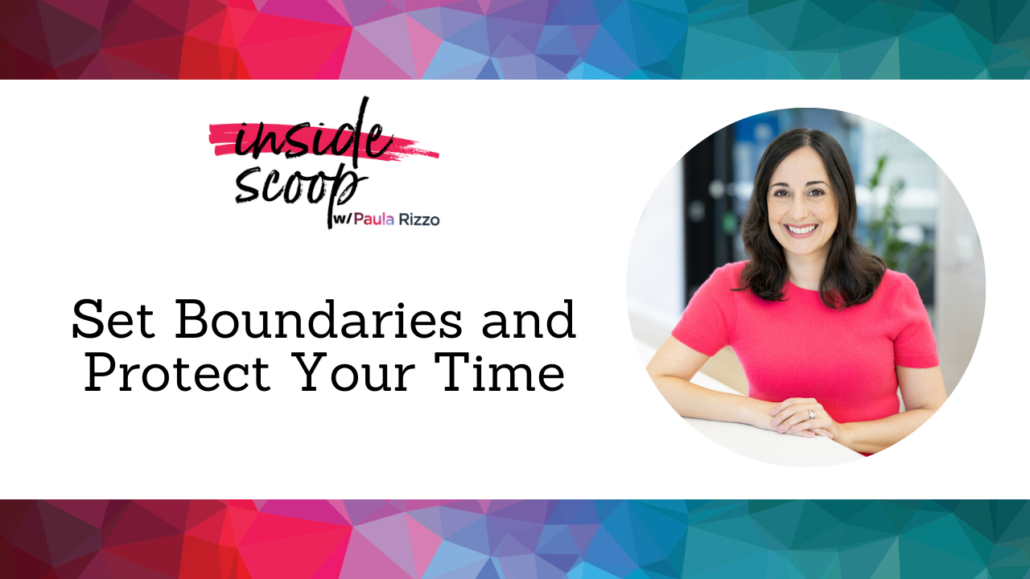How To: Setting Boundaries
___
BONUS FREEBIE: Want even more ways to stay organized, productive and less stressed? Click here to get access to my List-Making Starter Kit. It will boost your efficiency and get you back to doing more of the things you love.
___
When was the last time you did something because you didn’t want to let someone down? Whether your boss or friend or family member, so many of us have given in to people pleasing at one time or another.
And it just feels yucky.
Setting boundaries is something that should be covered in college — high school even! — because it takes a lot of practice to get good at it.
It’s not (yet) a universal skill.
Well, I want to help you out. I created a whole course on LinkedIn Learning about setting boundaries and today I’m spilling the beans.
I go into detail in a recent episode of Inside Scoop about the course so you can get a preview of what you’ll be learning.
When LinkedIn approached me about making a course on boundaries I was so excited. I know this is something that people can struggle with, and over the years as a journalist and producer, and now as a media trainer and author, I’ve found so many benefits to setting boundaries.
So in this episode of Inside Scoop I want to share some of the strategies I talk about in my How to Set Boundaries and Protect Your Time course.
The Case for Protecting Your Time
Think about how your time is best spent. When you start protecting your time, how will you spend it?
Years ago when I worked in a newsroom I was invited to a wedding along with all of my colleagues. Sure, I wanted to go and support my colleague, even though we weren’t that close.
So instead of instantly responding “yes” I paused and thought about how else I could spend that time.
Instead of the wedding I went to a Broadway show with my mom and loved it! We had the best time.
When you start thinking about time as yours it can be easier to put your needs first.
Time Tracking 101
How long do you spend scrolling through Instagram every day. Seriously, you should check.
Or the last time you attended a meeting that was scheduled for 30 minutes and ran for 52?
Before you can protect your time, you need to know where your time is going. How it’s being spent. You can do this by chunking out your time. List what you did today and how long it really took you (not the idealized time!). Think about which things were most rewarding and which were most soul-sucking.
List these out on two separate lists – the rewarding activities and the time sucks.
Setting Your Own Personal Boundaries
This is something I talk about often in my books, Listful Thinking and Listful Living. How do you work best?
For instance, I block out my days in a specific ways. Mondays are for writing and getting ready for the week. I don’t take meetings on Mondays. Tuesdays, Wednesdays and Thursdays are business focused. I produce Inside Scoop, meet with media training clients, speak to groups, and get business admin stuff done. Then Fridays are for creativity. I’m working on a novel and that’s when I’ve written most of it – on Fridays.
Make some rules for yourself. And stick to them.
Strategies to Stay On Track
In this LinkedIn Learning course I share a few scripts on how to say no, what to say instead, and how to feel good about it while staying accountable to your rules.
It’s easy to think about making changes and setting healthy boundaries, but it can be hard to do in practice.
So, as you journey off to set your own boundaries remember that just because you can does not mean you should.
There’s, of course, much more to learn in the full course, you’ll find it on LinkedIn Learning here.
___
BONUS FREEBIE: Want even more ways to stay organized, productive and less stressed? Click here to get access to my List-Making Starter Kit. It will boost your efficiency and get you back to doing more of the things you love.
___



